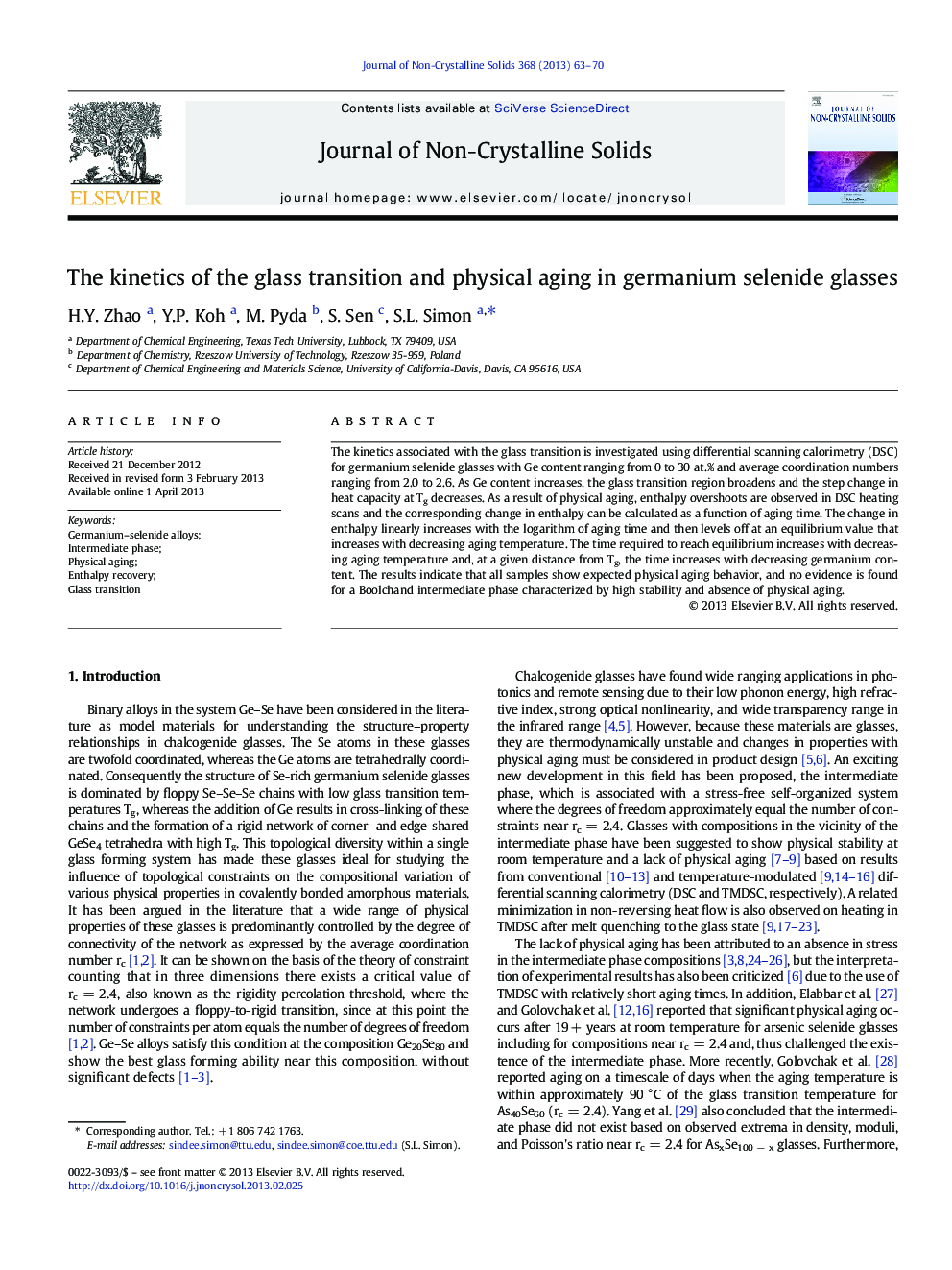| Article ID | Journal | Published Year | Pages | File Type |
|---|---|---|---|---|
| 1481360 | Journal of Non-Crystalline Solids | 2013 | 8 Pages |
•Tg and enthalpy recovery are investigated using DSC for germanium selenide glasses.•Absolute Cp curves are independent of Ge content in liquid and glass regions.•Tg increases and broadens and ΔCp decreases as germanium content increases.•All samples show physical aging behavior when aged a given distance from Tg.•No evidence is found for a highly stable intermediate phase.
The kinetics associated with the glass transition is investigated using differential scanning calorimetry (DSC) for germanium selenide glasses with Ge content ranging from 0 to 30 at.% and average coordination numbers ranging from 2.0 to 2.6. As Ge content increases, the glass transition region broadens and the step change in heat capacity at Tg decreases. As a result of physical aging, enthalpy overshoots are observed in DSC heating scans and the corresponding change in enthalpy can be calculated as a function of aging time. The change in enthalpy linearly increases with the logarithm of aging time and then levels off at an equilibrium value that increases with decreasing aging temperature. The time required to reach equilibrium increases with decreasing aging temperature and, at a given distance from Tg, the time increases with decreasing germanium content. The results indicate that all samples show expected physical aging behavior, and no evidence is found for a Boolchand intermediate phase characterized by high stability and absence of physical aging.
